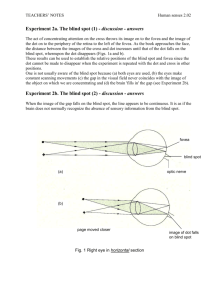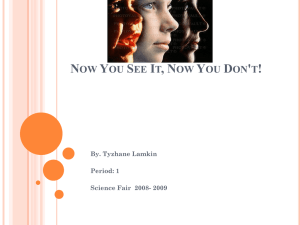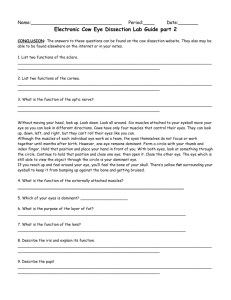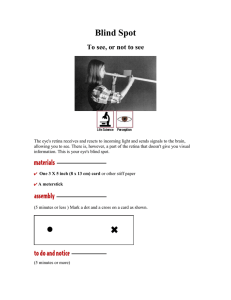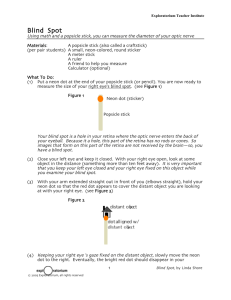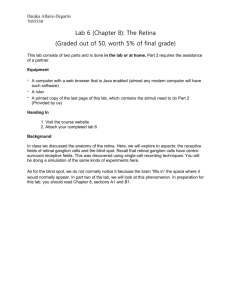docx - STAO
advertisement
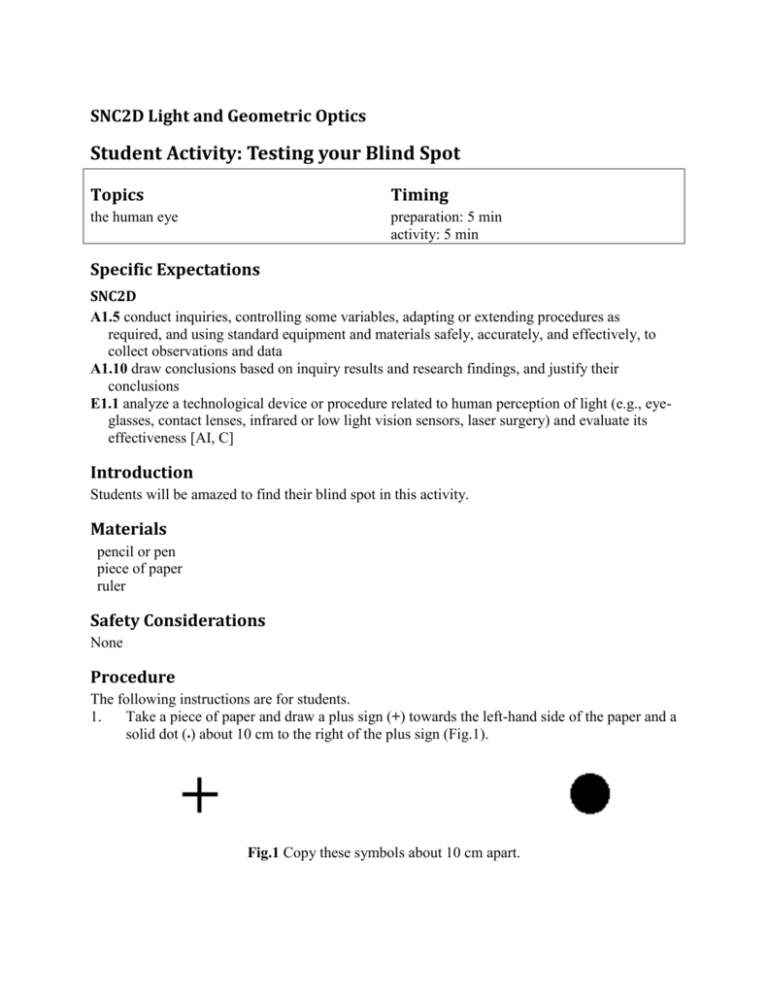
SNC2D Light and Geometric Optics Student Activity: Testing your Blind Spot Topics Timing the human eye preparation: 5 min activity: 5 min Specific Expectations SNC2D A1.5 conduct inquiries, controlling some variables, adapting or extending procedures as required, and using standard equipment and materials safely, accurately, and effectively, to collect observations and data A1.10 draw conclusions based on inquiry results and research findings, and justify their conclusions E1.1 analyze a technological device or procedure related to human perception of light (e.g., eyeglasses, contact lenses, infrared or low light vision sensors, laser surgery) and evaluate its effectiveness [AI, C] Introduction Students will be amazed to find their blind spot in this activity. Materials pencil or pen piece of paper ruler Safety Considerations None Procedure The following instructions are for students. 1. Take a piece of paper and draw a plus sign (+) towards the left-hand side of the paper and a solid dot (•) about 10 cm to the right of the plus sign (Fig.1). Fig.1 Copy these symbols about 10 cm apart. 2. 3. Hold the paper at arm’s length in front of you. Close your left eye and look at the +. Note that you can see the dot (•) out of the corner of your eye. Slowly move the paper towards you. Remember to keep looking at the +. What happens to the dot? Disposal No special concerns What happens? At a certain point as you move the paper towards you, the dot will seem to disappear. This location in front of your eye is the blind spot of your right eye. How does it work? At the back of your eye (the retina), nerve cells known as rods and cones sense light and send signals to your brain. There is an area of the retina where the all the nerve cells come together to connect to your brain via the optic nerve. At this location—the blind spot—there are no rods and cones to sense light and so you have no information about what should be detected at this point. Your brain “fills in” the blind spot based on what it sees around it. Your blind spot is a fair size (as big as the spot in the diagram) and although you do not see the dot, your brains makes up something to see based on what surrounds it. Teaching Suggestions/Hints 1. 2. 3. Use this demonstration as you explain the parts of the eye and the concept of the blind spot. It is important that students keep looking at the + sign while performing this activity. It sometimes takes students a couple of times to be able to perform this activity. To help students understand this concept, it is effective to compare the human eye to a camera equipped with photographic film. The blind spot in the human eye is equivalent to there being a hole in the film. Next Steps Students could try to determine how big their blind spot is by using different sized objects. As well, students could change the background paper to graphing paper or coloured paper and see what happens. Finally, students should think about what advantage is served by having two eyes. Additional Resources 1. 2. Web site providing many pre-made blind spot patterns http://faculty.washington.edu/chudler/chvision.html Web site showing a video of this demonstration http://www.youtube.com/watch?v=DdqLRdyWCIY
